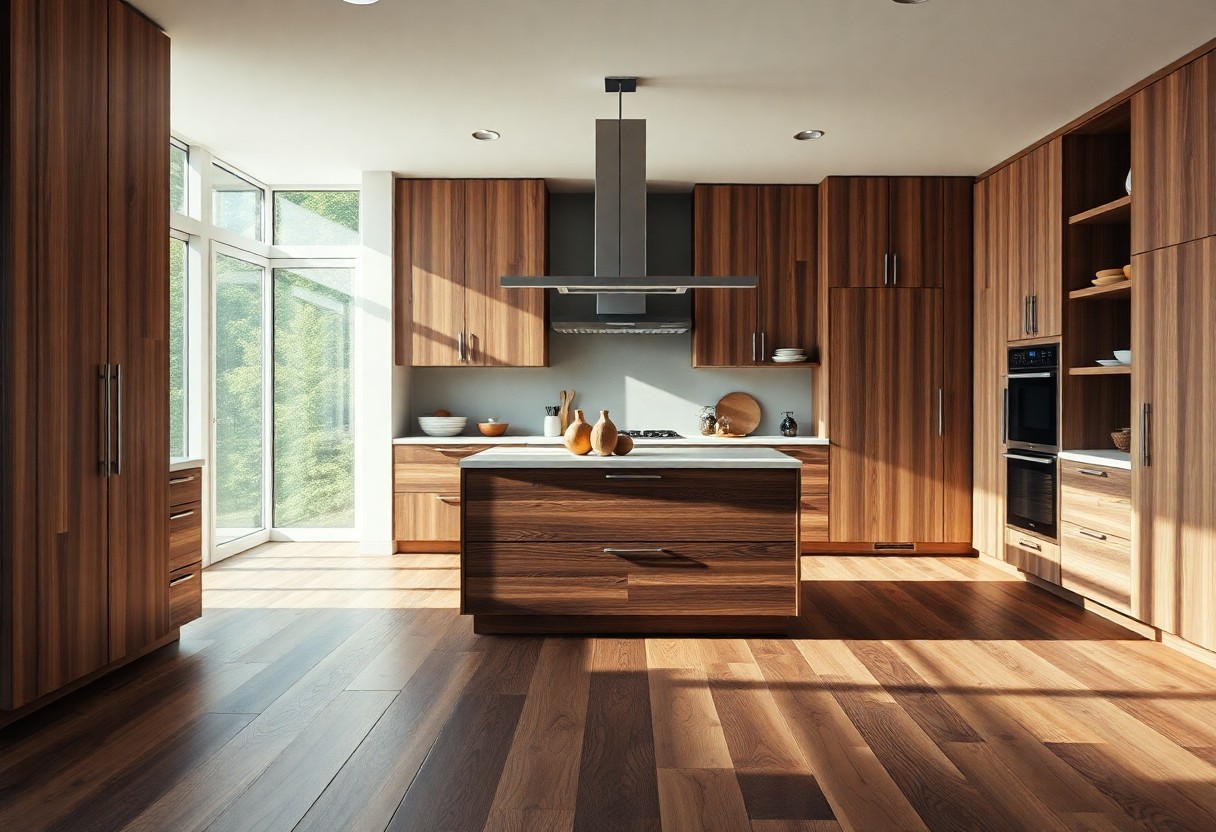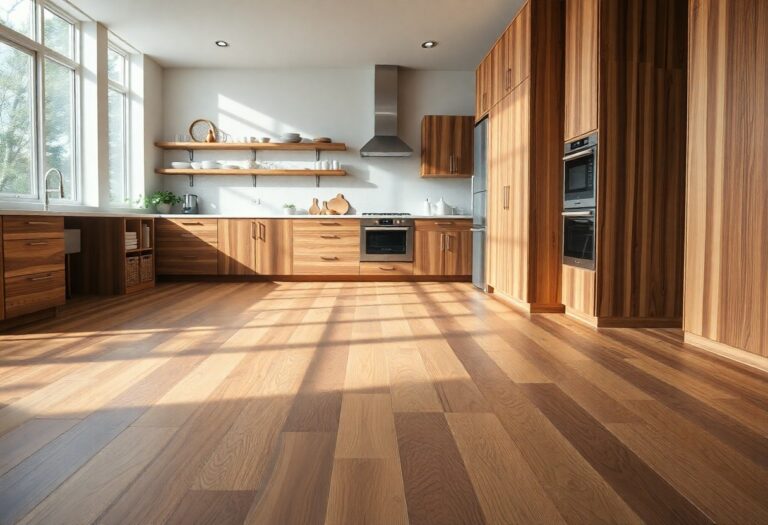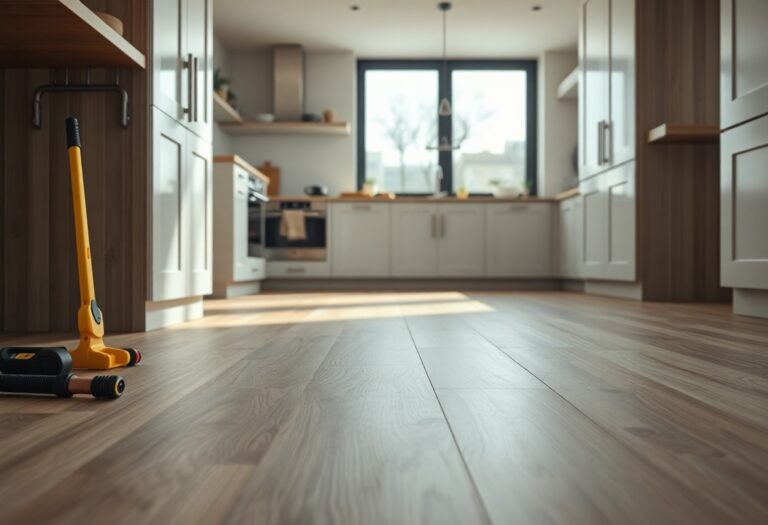You may be considering hardwood flooring as a stylish and durable option for your Kitchener home, but with so many choices available, it can be overwhelming to make the right decision. This complete overview will guide you through the various types of hardwood flooring, their benefits, and factors to consider based on your lifestyle and design preferences. By the end of this post, you’ll feel empowered to select the perfect hardwood flooring that complements your home’s aesthetic while meeting your practical needs.
Decoding the Hardwood Spectrum
Understanding the range of hardwood flooring options available to you can simplify the decision-making process for your Kitchener home. From oak to maple, each type presents a unique aesthetic and practical features that reflect your style and meet your living needs. Exploring the different categories of hardwood empowers you to choose the best fit for your space.
The Diversity of Hardwood Species
Hardwood flooring comes in a variety of species, each with distinct colors, grains, and textures. You might find options like oak for a classic look, cherry for a warm, rich appearance, or hickory, renowned for its ruggedness. Each species not only varies visually but also in terms of cost, availability, and maintenance requirements, allowing you to customize your flooring choice to your taste and lifestyle.
Evaluating Hardness and Durability Ratings
Hardness and durability ratings are critical factors to consider, particularly in high-traffic areas. The Janka hardness test provides a standard measurement, rating each species based on its resistance to wear and denting. For example, Brazilian cherry scores about 2,350, whereas red oak scores 1,290, making the former more resilient in busy households and ideal for those with pets or children.
Delving deeper into hardness and durability, the Janka scale not only helps you gauge how well a hardwood species can withstand daily use but also influences the longevity and maintenance of your flooring. Harder woods tend to be more scratch-resistant, which is beneficial in high-traffic kitchens where spills and foot traffic can take a toll. However, softer species may suit less trafficked areas or provide a cozier aesthetic. Balancing your sense of style with the practical implications of hardness will ultimately guide you in selecting the most appropriate hardwood for your living environment.

The Aesthetics of Flooring Choices
Your hardwood flooring not only impacts the functionality of your space but also plays a key role in your home’s overall aesthetic. The right choice can enhance the beauty of your kitchen and create a welcoming environment. From traditional to modern styles, the variety of hardwood finishes, colors, and grain patterns can help you express your personal taste and elevate the design of your home.
Color and Grain Patterns That Define Your Space
Finishing Options: Matte vs. Gloss and Their Impact
The Cost Equation: Balancing Budget and Quality
Budget considerations play a significant role in your choice of hardwood flooring for your Kitchener home. While you may find options that fit comfortably within your budget, achieving a perfect blend of quality and aesthetics requires careful evaluation of your short and long-term spending. Upper-end choices may initially strain your wallet, but their durability and timeless appeal can yield savings over time, making them worthwhile investments. Meanwhile, lower-cost alternatives may need replacing sooner, ultimately costing you more.
Initial Investment vs. Long-Term Value
Choosing between a lower initial investment and higher long-term value often shapes your flooring decision. High-quality hardwood might seem expensive upfront, averaging between $6 to $12 per square foot, but its lifespan can exceed 50 years with proper care. In contrast, cheaper options may be appealing at around $3 to $5 per square foot but risk quick deterioration and subsequent replacement costs. Assessing how long you plan to stay in your home can influence this decision significantly.
Hidden Costs: Installation and Maintenance Factors
Beyond the sticker price of hardwood flooring, hidden costs regarding installation and maintenance can impact your overall budget. While a product may seem affordable, associated expenses such as hiring professionals for installation (averaging $3 to $7 per square foot) and the ongoing care necessary for upkeep can escalate your investment significantly. Your choice of material also influences these costs; some woods require more frequent refinishing or special cleaning products, further increasing the financial commitment. Knowing these factors beforehand can help you avoid budgetary surprises.
- Installation costs can vary based on flooring type and local labor rates.
- Quality finishes may extend the time between refinishing jobs, saving costs over time.
- Different wood species have varying resilience, impacting your maintenance schedule.
- Having effective insulation can lower heating costs and maintain the beauty of hardwood.
Knowing these elements is crucial for effective budget management.
Hidden costs, primarily linked to installation and maintenance, can significantly affect your overall flooring investment. Ensuring that you account for these factors helps you make a more informed decision while selecting hardwood flooring for your home. Additional expenses such as moisture barriers or subfloor preparation may be necessary, depending on your installation approach. Also, consider the long-term implications of your flooring choice—certain types may require more specialized cleaning or refinishing services, ultimately impacting your annual budget.
- Regular maintenance might include cleaning solutions designed specifically for hardwood.
- Climate control systems in your home can affect flooring longevity.
- Consider warranties that cover eventual wear and tear, saving repair costs.
- Research local conditions that might affect your flooring’s lifespan.
Knowing these elements is crucial for maintaining your hardwood flooring effectively.
Environmental Considerations in Flooring
Choosing hardwood flooring involves more than aesthetics and functionality; it encompasses a responsibility towards the environment. By understanding the impact of your flooring choices on ecosystems and the climate, you can make an informed decision that reflects your values. Prioritizing sustainable options not only benefits the planet but can also create a healthier home environment, contributing to overall well-being.
Sourcing Sustainable Hardwood: Certifications and Labels
When selecting hardwood flooring, look for certifications such as the Forest Stewardship Council (FSC) and the Sustainable Forestry Initiative (SFI). These labels indicate that the wood has been harvested responsibly, ensuring that forest ecosystems remain intact for future generations. Purchasing certified wood means supporting sustainability and promoting ethical practices in the timber industry, allowing you to feel confident about your flooring choice.
Understanding the Carbon Footprint of Your Choices
Your flooring decisions can significantly affect your home’s carbon footprint. Opting for locally sourced hardwood reduces transportation emissions, while choosing reclaimed wood minimizes the demand for new production. Hardwood species also vary in their carbon storage capabilities; for example, Oak and Maple sequester more carbon than softer woods. By selecting the right type of hardwood and sourcing it responsibly, you not only enhance your space but also contribute to overall environmental health.
Calculating the carbon footprint of your flooring choices involves examining production methods, transportation, and end-of-life impacts. Each step in the supply chain can contribute to greenhouse gas emissions—approximately 45% of a wood product’s lifecycle emissions occur during harvesting and processing. By opting for local or reclaimed hardwood, you can minimize these emissions and actively participate in reducing climate change-induced impacts. The more informed you are about the origins and life cycle of your flooring, the more effectively you can reduce your home’s overall environmental footprint.
Practical Installation Insights for Kitchener Homes
Installing hardwood flooring in your Kitchener home requires careful planning and execution to ensure a successful outcome. From choosing the right installation method to preparing your space adequately, these aspects affect the performance and lifespan of your flooring. Understanding whether to take on the project yourself or hire professionals is fundamental, as is preparing your home for the process, ensuring the environment is conducive to a flawless installation.
DIY vs. Professional Installation: Weighing the Pros and Cons
Deciding between a DIY approach or enlisting a professional for your hardwood flooring installation can significantly impact your results. Here’s a breakdown of the advantages and disadvantages of both options.
| DIY | Professional Installation |
|---|---|
| Cost savings on labor | Expertise ensures a perfect fit |
| Flexibility in scheduling | Guaranteed workmanship and warranty |
| Sense of accomplishment | Access to specialized tools |
| Control over materials and methods | Less time and stress involved |
| Opportunity to learn new skills | Quality finishes with less risk of error |
| Time-consuming, especially for beginners | Higher upfront cost |
| Potential for mistakes | May have limited availability during peak season |
| Requires physical labor and time | Less chance of hidden problems arising |
| Requires extensive research and planning | Advice and recommendations from experienced professionals |
Preparing Your Space: Essential Steps Before Installation
A smooth installation of hardwood flooring begins with thorough preparation of your space. This involves clearing the area, ensuring the subfloor is level, and acclimating the hardwood planks to your home’s climate. By taking these steps, you create an environment that promotes optimal performance and longevity of your new flooring.
Clearing furniture and any obstacles from the installation area allows installers to work efficiently. You should also check the subfloor for damages, replacing or repairing any sections as needed; this ensures a stable base. Acclimating your hardwood planks involves allowing them to sit in the room for several days, which helps them adapt to the temperature and humidity levels in your home. By setting the stage before installation begins, you reduce the chances of complications and enhance the final look of your flooring.
To wrap up
So, as you initiate on the journey of selecting hardwood flooring for your Kitchener home, it is imperative to consider factors such as durability, style, and maintenance needs. With the right information and understanding of your preferences, you can choose flooring that complements your lifestyle and enhances your space. Don’t rush the decision; evaluate options, and consider professional advice to ensure you make an informed choice that brings lasting beauty and value to your home.





